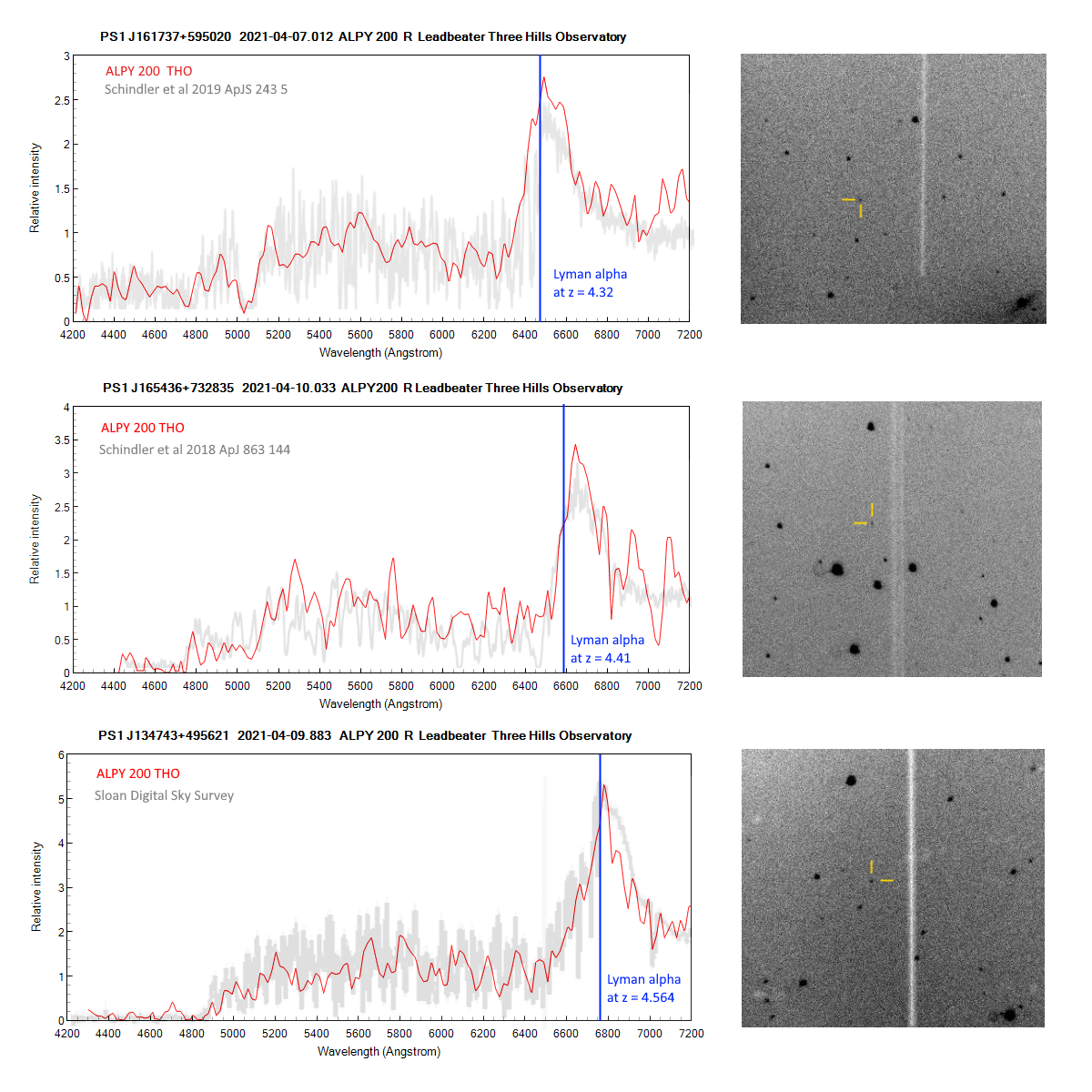Observation by Robin Leadbeater: Spectra of QSO at z >4.3
Uploaded by
Robin Leadbeater
Observer
Robin Leadbeater
Observed
2021 Apr 09 - 21:12
Uploaded
2021 Apr 11 - 13:47
Objects
Spectrum
Equipment
- ALPY 200 spectrograph
- ATIK 428 camera
- Celestron C11
Exposure
3x1200s, 7x1200s
Location
Wigton, Cumbria
Target name
PS1_J165436+732835 , PS1_J134743+495621
Title
Spectra of QSO at z >4.3
About this image
Following on from a previous QSO spectrum at z=4.315, I found these two at higher redshifts at z =4.41 and 4.564 in the PS ELQS catalogue, shown here alongside PS1 J161737+595020. (My ALPY200 spectra in red overlaid on spectra from the literature in grey)
The most distant at z =4.564 is g mag 20.2/ r mag 18.4 which is getting rather faint when you consider the brightness in the spectrum is ~6 magnitudes fainter than this.
I am not sure I can go much deeper from here. There are possible targets at higher redshifts further south, though there is perhaps one more at z=4.61 which might just be possible.
Files associated with this observation
Like this image
Comments
Hi Robin,
Apart from the broad Lyman alpha emission, how reliably can the absorption features be interpreted or are they mostly noise? I've seen the interesting discussion on other forums of the absorption feature just above 5000Å in the first spectrum
Cheers
Hugh
Hi Hugh,
Yes my spectra at this magnitude are probably only SNR~10, not sure about the spectra in the literature, but the broad absorption feature at ~5040A in the top one looks real and is confirmed by the professional spectrum. The spectra also quite abruptly fall close to zero at the blue end as expected at the limit of the redshifted Lyman series due to absorption by intervening gas clouds along the way at various redshifts. Similarly between there and the main Lyman alpha emission you get a series of Lyman absorptions at various redshifts (The "Lyman forest") but the absorption at 5040A does not fit with these. I have seen something similar in a gravitationally lensed QSO spectrum which was attributed to strong Ly alpha absorption by an intervening galaxy at a particular redshift. If that is the case here it would would work out to be about z~3.2
Copyright of all images and other observations submitted to the BAA remains with the owner of the work.
Reproduction of work by third parties is expressly forbidden without the consent of the copyright
holder. By submitting images to this online gallery, you grant the BAA permission to reproduce them in
any
of our publications.


